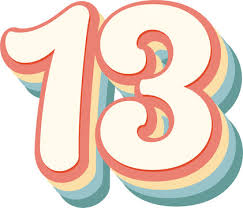This week we are in Central Europe which is the region lying
between the defined areas of Eastern and Western Europe. It includes the
countries of Estonia, Latvia, Lithuania, Poland, Slovakia, Czech Republic and
Hungary.
So, this week we will start with the Czech Republic, also known
as Czechia, is a landlocked country in Central Europe. Historically known as
Bohemia, it is bordered by Austria to the south, Germany to the west, Poland to
the northeast, and Slovakia to the southeast.
The country was once known as Czechoslovakia but in November
1989, the Velvet Revolution ended communist rule in the country and restored
democracy. On 31 December 1992, Czechoslovakia was peacefully dissolved, with
its constituent states becoming the independent states of the Czech
Republic and Slovakia.
It has a population of around 10.7million, the capital is Prague,
and the official language is Czech.
The koruna, or crown, has been the currency of the Czech
Republic since 1993. The koruna is one of the European Union's eight
currencies, and the Czech Republic is legally bound to adopt the euro in the
future. The official name in Czech is koruna česká.
The Czech National Bank, is the central bank and financial
market supervisor in the Czech Republic, headquartered in Prague. It is a
member of the European System of Central Banks.
The flag of the Czech Republic is the same as the flag of the
former Czechoslovakia. Upon the dissolution of Czechoslovakia in December 1992,
the Czech Republic kept the Czechoslovak flag while Slovakia adopted its own
flag. The first flag of Czechoslovakia was based on the flag of Bohemia and was
white over red. It was created in 1920,
shortly after the founding of the first independent Czechoslovak state. The
white, red, and blue colors are both symbolic and historic.
The coat of arms of the Czech Republic is divided into two
principal variants. Greater coat of arms displays the three historical
regions—the Czech lands—which make up the nation. Lesser coat of arms displays
lone silver double-tailed lion in red shield. The Czech coat of arms dates back to the 13th century. It
consists of a shield divided into four squares. The top left and bottom right
squares are red, with a white, double-tailed crowned lion. The lion is the
symbol of Bohemia and signifies power and sovereignty.
Its national bird is I think
the female eagle, and its national flower is the rose and the lion is the national
animal.
It is considered a relative
safe country with violent crime low but petty crime exists as it does in all
countries.
Many Czech’s speak English,
German and Russian.










Interesting read Jo-Anne.
ReplyDeleteI have not visited any countries in Europe. Interesting to read about them.
ReplyDeleteI will never get to visit these places in person and find posting about them interesting
DeleteI enjoyed the history lesson today, Jo-Anne. Thanks!
ReplyDeleteI am pleased
DeletePrague is a very beautiful city, I've been there.
ReplyDeleteLucky you, not somewhere I will ever get to visit
DeleteMy husband was very young when he left Czechoslovakia with his parents, but his memories or dreams of lovely country remain. When my mother in law was elderly, we took her back "home" for the first time since 1951 and she had the best trip ever! Her Czech was still excellent.
ReplyDeleteFor many once learnt never forgotten, it is cool your husband has good memories or dreams of the country
DeleteI didn't even know it wasn't still called Czechoslovakia!
ReplyDeleteI do like the simple flag they have. :)
Many countries change their name and often we are not aware of the change, I did know that Czechoslovakia changed to Czech Republic though
DeleteNot to mention they've been brewing outstanding beers for centuries... (I know, leave it to Chris...)
ReplyDelete